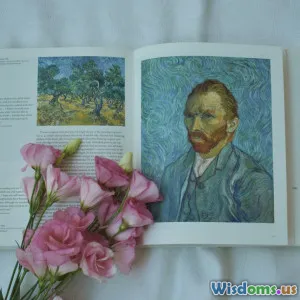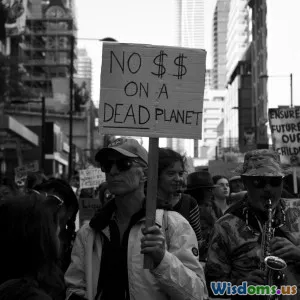
Art Movements That Changed the World: A Detailed Look
7 min read Explore transformative art movements that reshaped society and culture with vivid insights and inspiring stories. (0 Reviews)
Art Movements That Changed the World: A Detailed Look
Art is often a mirror to society—reflecting changes, challenges, and breakthroughs of its time. Throughout history, certain art movements have transcended the boundaries of creativity, influencing culture, politics, social perspectives, and even technology. This article takes you on a journey through some of the most groundbreaking art movements that not only altered artistic expressions but reshaped the world’s cultural fabric.
Introduction: Why Art Movements Matter
Art movements serve as vibrant snapshots of societal evolution. When artists collectively embrace new ways of seeing and representing the world, it signals a shift in cultural consciousness. The value of examining these movements lies not only in understanding their aesthetics but appreciating their far-reaching impact—from sparking social reforms to redefining beauty standards and inspiring global dialogues.
Renaissance: The Dawn of Modern Humanism
A Rebirth of Culture and Thought
Spanning from the 14th to the 17th century, the Renaissance marks a monumental turn from medieval perspectives toward humanism and empirical inquiry. Centered initially in Florence, Italy, this period saw a reawakening of interest in classical antiquity alongside unprecedented artistic innovation.
Iconic Contributions and Impact
Artists like Leonardo da Vinci, Michelangelo, and Raphael pioneered techniques such as linear perspective and chiaroscuro, bringing unparalleled realism and emotional depth to art. Michelangelo’s "David" remains a symbol of human aspiration and democratic ideals.
More than visual aesthetics, the Renaissance ignited scientific exploration—figures like Galileo challenged prevailing dogmas, planting seeds for modern science.
Cultural Legacy
The period laid the foundation for modern Western civilization by championing individual potential, intellectual freedom, and secularism. Its influence pervades education, philosophy, and political thought today.
Impressionism: Revolutionizing Perception and Technique
Breaking Traditions in 19th-Century France
By the late 1800s, the rigid academic standards dominated art. Impressionists like Claude Monet, Edgar Degas, and Mary Cassatt broke from tradition by capturing fleeting moments and everyday scenes with loose brushwork and novel use of light.
Capturing Modern Life
Unlike historic or mythological themes popular before, they focused on urban life, leisure, and landscapes. Monet’s "Impression, Sunrise" gave the movement its name, emphasizing sensory experience over meticulous detail.
Social and Artistic Impacts
Impressionism democratized art by portraying common subjects and influencing movements in photography and cinema. It celebrated spontaneity and perception, challenging centralized art institutions.
Surrealism: Unlocking the Subconscious Mind
Art Beyond Reality
Emerging in the aftermath of World War I, Surrealism was deeply rooted in Freudian psychoanalysis and sought to release the unconscious imagination in art. Artists such as Salvador Dalí and René Magritte created dreamlike worlds filled with bizarre juxtapositions.
Political and Social Dimensions
Aside from aesthetics, Surrealism became a tool for social critique and rebellion. André Breton, the movement’s founder, viewed surrealism as a means of liberation, influencing literature, film, and political activism.
Continuing Influence
Surrealist ideals infiltrated popular culture and advertising, pushing the boundaries of creativity and encouraging viewers to question reality and identity.
Abstract Expressionism: Postwar American Cultural Shift
Redefining Artistic Language
Developed in the 1940s and 50s, Abstract Expressionism centered in New York shifted the art world’s epicenter from Europe to America. Artists like Jackson Pollock and Mark Rothko embraced spontaneity and non-representational forms tied to emotion and existential ideas.
Freedom in Form and Scale
Pollock’s drip paintings exemplified the fearless breaking of artistic conventions. This movement also reflected postwar anxieties and a search for meaning in the nuclear age.
Impact on Identity and Culture
Abstract Expressionism became a symbol of freedom during the Cold War and redefined the global art market. It also opened doors for diverse American voices in contemporary art.
The Digital Revolution and New Media Art
Art Meets Technology
In recent decades, digital art has emerged as a new movement facilitating interaction, virtual realities, and AI-driven creativity. Pioneers incorporating binary code, pixels, and virtual environments are redefining art’s boundaries.
Influences on Global Culture
Digital art democratizes creativity and addresses contemporary issues like data privacy and identity online. Projects such as Beeple’s NFT art sales underscore this radical shift.
Expanding Artistic Possibilities
This movement challenges traditional notions of permanence and authorship, reflecting a fast-paced, interconnected society.
Conclusion: Art’s Enduring Power to Transform
Art movements are much more than styles or school names—they are powerful lenses into societal mindset shifts, technological advances, and evolving worldviews. Whether through the humanist ideals of the Renaissance, the sensory innovations of Impressionism, or the boundless realms of the digital age, art continually challenges us to rethink, feel, and envision.
As windows to cultural revolutions, these movements inspire individuals and societies to embrace change courageously. Recognizing and exploring their legacies encourages us to appreciate the complex interplay between art, history, and the ongoing story of humanity.
References:
- Vasari, Giorgio. Lives of the Artists. Oxford University Press.
- Rewald, John. The History of Impressionism. Museum of Modern Art.
- Breton, André. Manifestoes of Surrealism. University of Michigan Press.
- Rosenberg, Harold. The Tradition of the New. Horizon Press.
- Paul, Christopher. Digital Art. Thames & Hudson.
By exploring these pivotal art movements, readers gain a deeper appreciation for how art shapes and is shaped by the world around us.
Rate the Post
User Reviews
Popular Posts





















